Home page
» PHILANTROPY
» Philanthropist millionaires
Philanthropist millionaires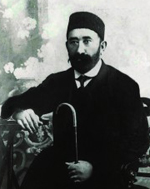 Aga Musa Nagiyev Aga Musa Nagiyev is Baku millionaire and philanthropist. He built the magnificent “Ismailiyye” building for the “Charity society” of the city, paid construction costs of the third floor of incomplete Realni School, built a hospital in the suburbs, and allocated a great amount of money for Baku water pipe. He was the guardian of the first Realni school, and managed to have extra 25 Muslim pupils accepted to the school every year. As a result, the number of Muslim pupils in the school reached 50% at short notice. 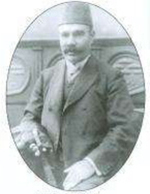 He is a philanthropist and millionaire who lived in the XIX century. Besides being well-known as the king of millers, he was a public figure. He actively participated in all events of the then Baku life with his financial and moral support. He had great services in the state-building processes, in the social and cultural events, and other fields of natural economy. Agabala Quliyev was one of the first co-founders of the Muslim Charity Society. Muslim Charity Society enhanced its work after the outbreak of World War I. In April-May, 1917 many refugees came to Baku from Turkey and Rum. The Society worked hard for providing the refugees with accommodation, food and warm clothing. Besides the general fund of the Society, the rich in Baku, including A.B.Quliyev provided the refugees with food: flour, rice. Afterwards, many Turkish and German captives were brought from the Caucasus front. The Society did not ignore to take care of them either.  She was a famous Azerbaijani philanthropist. She was renowned for her generosity and benevolence, possessed oil fields and a number of great mansions, spent a large amount of money to the construction of Shollar water pipe, had the poor and orphan treated in the Sabunchu hospital at her own expense, built a bathhouse in the Tatar street (now A.Topchubashov street). The bathhouse was free for the poor and the orphan once in a week. The greatest work of her life is the construction of Tezepir mosque in Baku (1905-1914). Religious Office of Caucasian Muslims is now located in that mosque. For the construction of the mosque, she recruited the first educated Azerbaijani architect Ziver bekh Ahmedbekhov, graduate of Saint Petersburg Civil Construction Engineering Institute. In subsequent years he became chief architect of Baku city. With a great amount of money Nabat khanum send Ziver bekh to the Eastern countries to learn the construction ways of famous mosques. Govher aga Govher aga was highly educated, had interest to education and culture, was trustee of people of art, scientists and poets. She had the Shusha mosque (now well-known as “Govher aga Mosque”) built by Ibrahimkhelil khan repaired and reconstructed in 1789. 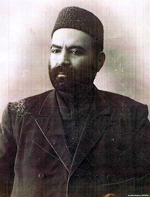 Hadji Hadji aga Dadashov was the 1st guild merchant, millionaire. When the 1st and 2nd level of merchantry was defined for Azerbaijani merchants in 1876, first Hadji Hadji aga got this title in Baku. Hadji Hadji aga became a millionaire only due to his competence, diligence, foresight at short notice. He hardly had any oil fields. He was inclined to construct buildings, and to build ships for sea trade. He had more than 40 real estates in Baku and a number of vessels in the Caspian. Hadji Hadji aga gained much profit from sea trade. He had trade connections with all Near and Far Eastern countries. He actively participated in charity works. He had some share in the construction of water pipeline to the city. Hadji Hadji aga participated in the crowning ceremony of Russian Emperor Alexander III and was awarded by the tsar the rank of counselor (statski sovetnik). 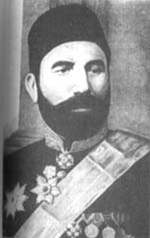 Hadji Zeynalabdin Tagiyev He played a very important role in Azerbaijan history. He was a famous millionaire, philanthropist, full state counselor of the Soviet Empire. H.Z.Tagiyev the owner of oil fields, mills, factories, fishing industry (fisheries near the Kur river and the Caspian belonged to him), and owner of trade and freight ships. He had large woods in Atlikhan near Quba region and in Yevlakh. In Enzeli and Resht, Hadji had woods, big mansions, buildings and representative office, in other cities including Moscow he had 4-floor palace, and a caravanserai in Iran. He was well-known in the Muslim world. All the Muslim, Russian, Armenian, Jewish charity societies selected H.Z.Tagiyev their honorary chairman. H.Z.Tagiyev was well-known in Russia first of all for his philanthropy and educational activities. His educational activities began mainly in the early XX century. This was not a coincidence. After the 1905 revolution, October Declaration of the government formed favourable conditions for the reviving of cultural-educational activities. A number of charity societies were established throughout the country. Newspaper and magazines were published. The establishment of these societies and the publication of newspaper and magazines are first of all connected with Tagiyev. Tagiyev played the role of organizer. The charity societies were either founded with Tagiyev’s participation and financial resources, or with his help. The first charity organization was “Muslim charity society” established in 1905. He published “Caspian” newspaper in 1881, which brought the leading intellectuals of the time together: Ahmed bekh Agayev, Ali bekh Husseinzadeh, Alimerdan bekh Topchubashov (editor of the newspaper) and others. In 1897, they founded the “Caucasus joint-stock company on the treatment of fibrous materials”. In 1906, H.Z.Tagiyev and M.Mukhtarov supported the establishment of “Neshri-maarif” and “Nijat” educational societies, which played the leading role in the enlightenment of the population and renewal of national consciousness. The construction of drinking water (Shollar pipe) to Baku is connected with H.Z.Tagiyev. In 1901, he built the first school for girls and spent 300 000 manat for it. This was the only school for girls in the South Caucasus. The construction of the building began in 1898 and was completed in 1900. The school is located in Nikolayevskiy (Communist) street (building of the Manuscript Fund of the Academy of Sciences of Azerbaijan SSR). H.Z.Tagiyev Theatre (The Theatre of Musical Comedy) was opened on November 27, 1883. The Azerbaijani boys and girls got education in England, Germany, France, and Russia at his expense. Nariman Narimanov, Memmed Emin Rasulzadeh and others studied with his financial support.  Isa bekh Abdulselam bekh oglu Hadjinski He was a civil servant and philanthropist. After the discovery of oil deposits in the areas that he inherited from his father, Isa bekh established his private oil company. Highly-specialized workers were employed in his wells and their wages were much higher than the payment of employees in Nobel’s, Rothschild’s, Montashov’s companies. Isa bekh Hadjinski spent much money on the construction of Baku boulevard, so he decided to build his mansion in the seaside. The first boulevard covered the areas from the current Puppet Theatre to the building of Azneft. He invited architect from Italy to build the building located in the Neftchiler Avenue, 103. After the construction works were completed, Isa bekh paid more money than the promised amount, for he liked the building too much and was very satisfied with the architect’s work. Even the amount was so high that the architect built a great mansion with this money in Berlin, Germany. For many years, I.Hadjinski had been honorary patron of Baku Gymnasium of Men. Every year, instead of 800 rubles, he transferred 1000 rubles to the account of the Gymnasium. 25 Azerbaijani graduates of the Gymnasium were sent to study in different cities of Russia on Isa bekh’s private account. 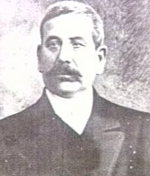 Murtuza Mukhtarov He was Baku petroleum entrepreneur and philanthropist. After Hadji Zeynalabdin Tagiyev, Shemsi Asadullayev, Musa Nagiyev the most outstanding representative of national Azerbaijan bourgeoisie and oil industry is Murtuza Mukhtarov. Mukhtarov’s name is mainly connected with the development of oil extraction technology in Baku. Though he had no higher technical education, there was hardly any other entrepreneur among oil magnates that knew the secrets of oil fields and drilling operations as well as Mukhtarov. Murtuza Mukhtarov was the patron of Baku Realni College and Temirxan-Shura Gymnasium of Women, and the honorary member of the Society for the spread of literacy and knowledge among the mountain-dwellers. He was honorary member of the St. Petersburg Muslim Charitable Society and the founder of 40 scholarships for the students of high and vocational schools. Murtuza Mukhtarov, who was well-known as a benevolent and kind person, earnest entrepreneur, left many magnificent buildings as a legacy. A number of buildings that are preserved up to this day in Baku and its suburbs, in many cities of Russia, and in several European countries are connected with his name. The mosque in Vladivostok city, beautiful and magnificent buildings in Kislovodks, and Florence, Italy are built with his money. Murtuza Mukhtarov actively participated in nearly all charity societies and gave financial assistance. 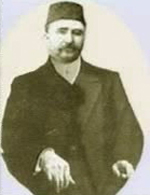 Shemsi Asadullayev He was one of the oil magnates of Azərbaijan in the early XX century. His name was always used together with the name of Nobel Brothers. He is the first oil entrepreneur who used steam vessel to carry oil to Russia. Besides mansions in Baku, he built a magnificent building on the bank of Neva River, in the block near the Winter Palace. For his wife Maria, he bought a luxurious mansion with fountain and greenhouse in the yard in Moscow. He actively participated in the charity works. One of his mansions he gave as a present to the Muslim Cultural Center (Tatar house). Baninin (Ummulbaninin), the Azerbaijani author, who died recently in Paris and had written her works in French, was Mirze Asadullayev’s daughter and the granddaughter of two millionaire grandfather- Shemsi Asadullayev and Musa Nagiyev. 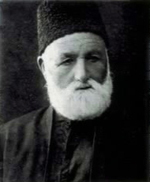 Teymur bekh Ashurbekov He was a millionaire in Baku in the early XX century. Teymur bekh Asurbekhov had large lands and economic fields in Sabunchu. He was well-known as a generous man and philanthropist. Moreover, he allocated large amounts of money to the construction of a hospital and school in Sabunchu, to the reconstruction and restoration of mosques, and for assistance to the poor. In accordance to his will, he was buried in Kerbela. 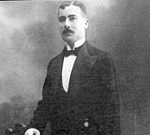 Teymur bekh Qulubekhov He was a messenate and millionaire. Teymur bekh Qulubekhov and Nejefqulu Mammadov founded “Trade house of T.Qulubekhov and N.Mammadov” in 1909. The trade house had oil fields, kerosene and gasoline plants in Balakhani and Surakhani. The trade house had vessels and special carriage-tankers to carry oil products in the Caspian. They had offices and storages in Baku, Petrovsk, Tbilisi, Vladikafkaz, Yekaterinadar, Stavropoulos governor, Warsaw, Lodz, and Minsk. He was engaged in charity works in Baku.  Yusif aga Dadashov He was an Azerbaijani millionaire and philanthropist. He graduated from the Stockholm University with excellent marks and knew Russian, French, and other European languages perfectly. He had the rank of active civil counselor of the Tsar Russia. He spent the majority of the profit he gained from shipping to the enlightenment of the population (Qori Seminar of Teachers and “College for girls”). He spent a large amount of money to the construction of Baku-Batumi oil pipeline, and of the building of Baku Duma. Moreover, he financed the visits paid by Maxim Gorky, D.I.Mendeleyev, and the oil geology specialist I.M.Gubkin to Baku. He actively participated in preserving the monuments of material culture and had Bibiheybet mosque reconstructed, and gave a 40-lamp chandelier and precious carpets to the Mosque built by the Buckhara Emir in Moscow. Dadashov, who financially supported the formation of Azerbaijan National Government and extensive activities of “Musavat” party, struggled with his group against the armenians in the March massacre in 1918. When he went to meet the ships sent to Russia for ships, on his way back after loading the weapons to the wagons he met the gang of dashnak Lalayan. S.Lalayan ordered him to pass under his sword. In response, Dadashov said: “I am a Turk. The Turk will die, but will not pass under the armenian sword.” The furious dashnaks killed him with tortures. Dadashov firmly withstood the tortures, thus, he managed to delay the Armenians, so that the weapons reached not to the dashnaks but to the bear-handed Azerbaijanis. After his death the armenians took his full-dress coat decorated with brilliant, ruby, and emerald, order and medals. His grave has not been found up to this day.
|
